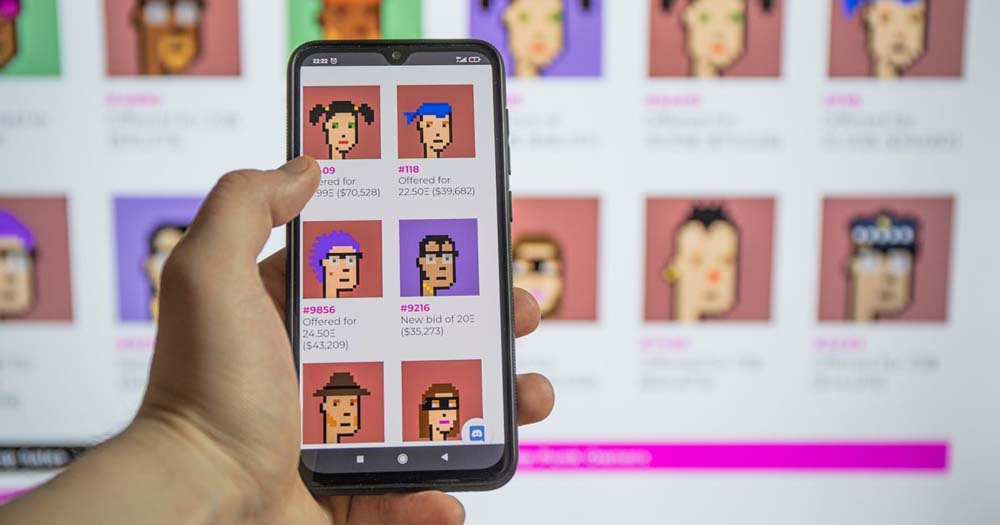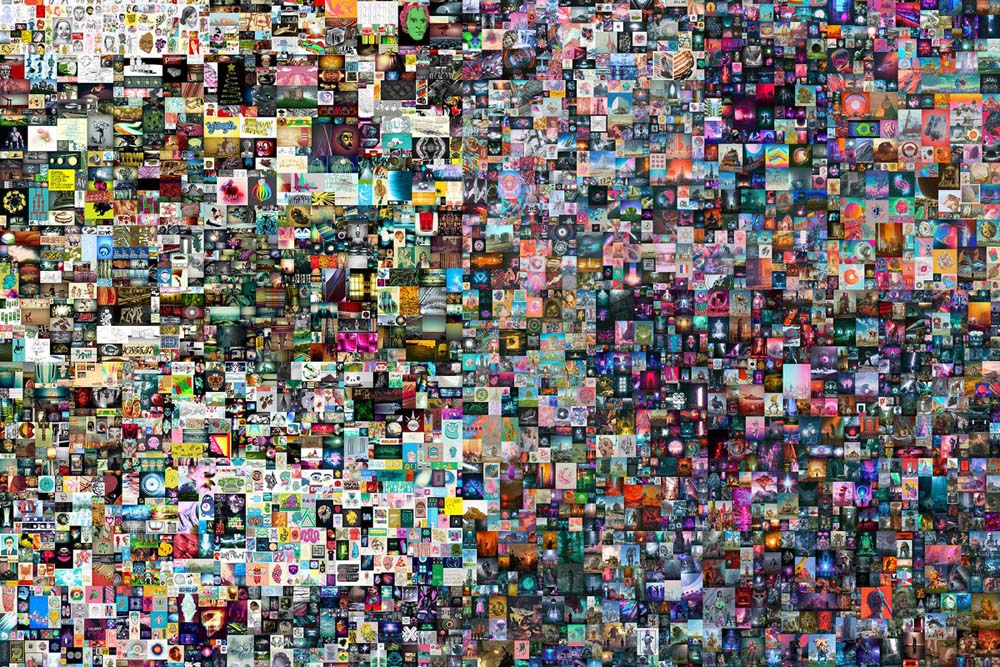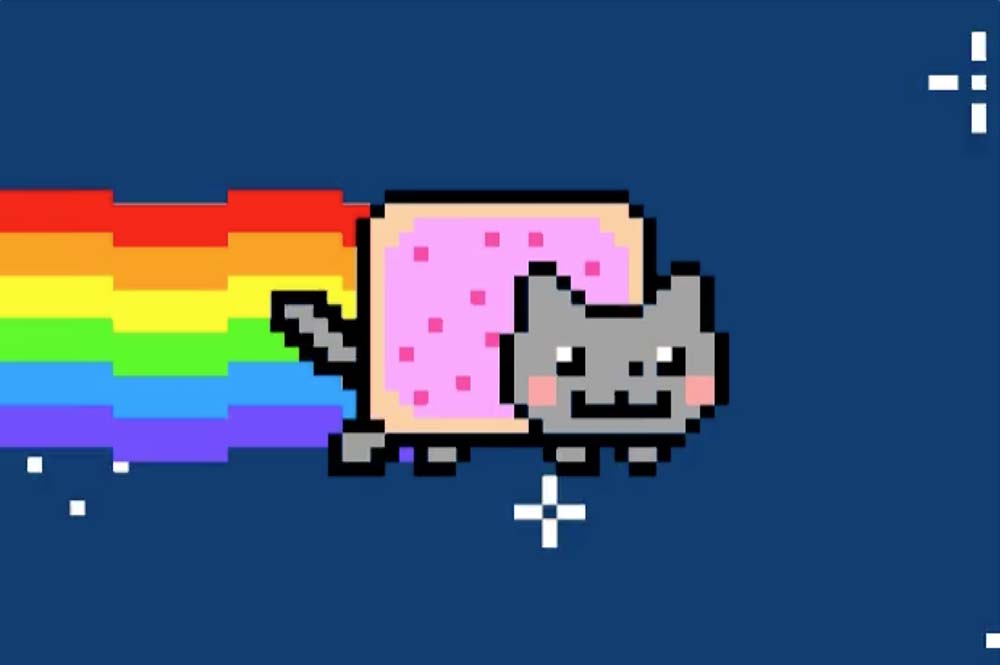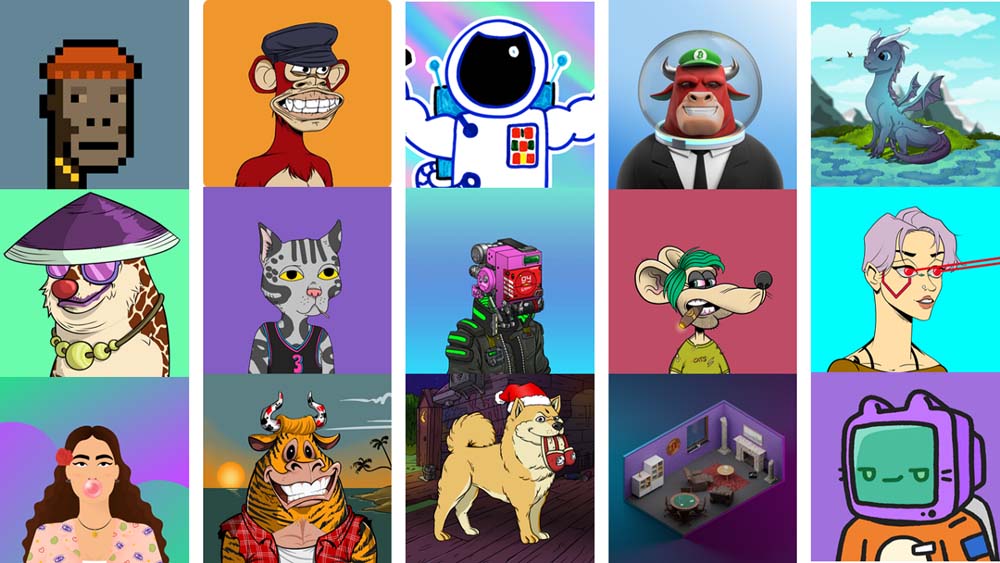A range of news stories about blockchain technology come up here and there, prompting the question: “What’s going on now anyway?”
Singer Grimes sold her NFT drawings for $5.8 million, the famous Nyan Cat GIF was sold for $790,000, and digital artist Mike Winkelmann, known online as Beeple, got $69.3 million for his JPG file in 2021.
And by the time everyone was beginning to think that things have been sorted out, the founder of Twitter Jack Dorsey sold his autographed tweet as an NFT.
Wait, what? Some tweet?
And it can be sold?

So What Is NFT and What Does It Have to Do with Art?
NFT is a non-fungible, i.e. unique token. Wikipedia defines it as a type of cryptographic token, each instance of which is unique and cannot be exchanged or replaced with another similar token, although tokens are usually interchangeable in nature.
These tokens exist in a blockchain, or simply, a database that is stored on billions of computers simultaneously. Compared to the traditional Internet model, where all devices are connected to centralized nodes (servers or ISPs), blockchain has no such nodes. In this system, all devices store absolutely all published information in the blockchain simultaneously. Tokens are a register entry within this chain, and the distinguishing feature of most of them is the principle of interchangeability. For example, one dollar or one bitcoin can be replaced with the same dollar and bitcoin, and there will be no difference.
But not all digital assets can be replaced by similar ones. A Warhol painting is not the same as a Picasso painting, a file with the song by The Beatles is not the same as a recording of Katy Perry’s concert. This is why the format of non-interchangeable tokens was created to bring unique items into the blockchain system.
Each NFT is unique in kind and quantity. It cannot be shared or replaced by a similar one, and all information about the author, owner, purchases, sales, and any other transactions with that token are securely “stored” in the blockchain. Roughly speaking, an NFT is a kind of certificate attached to a certain object. This solves the problem of copying and theft of digital work on the network.
In fact, NFT tokens can be anything “digital” (drawings, music, your brain downloaded into a computer and turned into an AI), but much of the current hype is about using technology specifically to sell digital art.
At a very high level, most NFT tokens are part of the Ethereum blockchain. Ethereum is a cryptocurrency, but its blockchain also supports NFT but works differently than, say, an ETH coin. It is also worth noting that other blockchains can implement their own versions of NFT, and some have already done so.

What May Stop You from Copying a Piece of Digital Art?
Nothing. Even though Beeple’s collage went up for auction for millions, the image is still being distributedaround the Internet and is glimpsed in news posts by the BBC, The New York Times, or here. In many cases, an artist even retains the copyright to his/her work, so he/she can continue making and selling copies.
But the NFT buyer owns the “token” that proves he/she is the owner of the “original” work. Some people compare this to buying an autographed print.
Is Someone Really Willing to Pay Millions for Tokens?
Yes, and according to the 2020 art market study and analysis from Art Basel and UBS, almost half of the world’s collectors are millennials, and 92% of millennial collectors buy art online.
In theory, anyone can tokenize their work and sell it as an NFT, but interest is increasingly fueled by headlines of multimillion-dollar sales.
On February 19, 2021, an animated gif of Nyan Cat, a meme of a flying pop-art cat created in 2011, was sold. The amount exceeded $700,000.
A few weeks later, Grimes sold her digital artwork for $6 million.
At Christie’s, the sale of an NFT by digital artist Beeple set a new digital art record amounting to $69 million.
Certainly, there are smaller sums, but they are still impressive when we talk about digital art. For example, “The Sailor” by FEWoCIOUS was sold for 46 ETH (more than $80,000 at the time). The price tag varies on platforms, but most often the amounts are less than 1 ETH.
But it’s not just art that’s being tokenized and sold. Twitter founder Jack Dorsey promoted the NFT of his first tweet, and the final bid reached $2.5 million.
In February 2021 alone, the trading volume of NFTs amounted to $500 million, which was more than in the whole of 2020!

Is NFT a Bubble?
Maybe yes, maybe no.
Many digital artists, who are now called creators and who are tired of creating content for years and posting it on Facebook and Instagram, while getting almost nothing in return except likes and approving comments from friends and followers, are now just going crazy about NFTs.
Now that it’s possible to really “own” digital art and sell it, these artists of all stripes – authors, musicians, filmmakers – envision the future where NFT transforms both their creative process and the way the world values art. And because any creator puts so much time and effort into their work, any compensation (=recognition) warms their hearts.
Digital art has long been underappreciated, largely because it’s so accessible. To help artists create financial value for their work, NFTs add a crucial component – scarcity. Some collectors, knowing that an original version of something exists, are more likely to seek to buy that very “authentic” piece.
How Can One Become a Creator and Start Selling?
The logical question here is: can ANYONE create art and sell it?
There are hundreds of thousands of different styles, genres, kinds, and types of works on popular NFT marketplaces. And thousands of creators: from the most unthinkable to the youngest. Yes, the youngest NFT creator, Aya Mak, is only 2 years old. She uses mixed media abstraction techniques and already sells her works.
So the answer is obvious: yes, basically anyone. But the one who has a digital wallet, some cryptocurrency to pay all the commissions and fees both when adding works to the marketplace and when selling or buying NFTs. And someone who can find a buyer or snag numerous crypto-collectors with their art.
To start an NFT collection (this is how you upload your artwork to the marketplace to exhibit and sell it later), you need to do the following:
- Choose the marketplace where you will exhibit and sell your work;
- Get a digital wallet, which will allow you to store NFTs and cryptocurrency;
- And you’ll probably need to buy crypto, like ETH, depending on what currencies the NFT provider accepts. You can buy it from any CEX, DEX, or platforms like Binance, Coinbase, Kraken, eToro, and even PayPal and Robinhood, and then transfer it to your chosen wallet;
- Pay all the commissions and fees, which, in some cases, can be simply cosmic. This will include the so-called “gas fee” (the price for conducting transactions on the Ethereum network) for each sale, as well as commissions of marketplaces for buying/selling and fluctuations in the price and rate of cryptocurrency.

Can NFT Play Havoc with the Usual Existence of the Art Market?
Specifically in the context of the art market, NFT might be solving a real problem. Normally, digital files (and,therefore, digital art) could be freely and easily copied, downloaded, distributed, stolen, and claimed as one’sown. NFTs have two important elements: they introduce the notion of authenticity with verified ownership, and they create scarcity because each digital artwork will have only one or a limited number of owners. The combination of certifying ownership on the one hand and creating scarcity on the other allows digital art to be collected and sold as non-digital.
There are other ways in which NFTs can undermine the art market.
- They may change how works of art are sold and bought. Moreover, they may even change the very definition of contemporary art. Creators of digital works can sell them directly to collectors through the platform, eliminating any intermediaries – dealers and galleries. And that may explain why auctions are so eager to get into this market and not miss the moment.
- NFT contracts can have a built-in feature that automatically awards artists a certain “percent” (most often 10%) when their work is resold. This truly heartens artists, as they have never received royalties from any resales.
- Crypto art can be owned by many people, so it is more transparent and liquid. Unlike traditional artwork owned by a single person, family, or institution, NFT allows multiple buyers to buy and sell portions of famous works as if they were stocks. In an interview with BlockSays, Lasha Antadze, the founder of a decentralized auction, talked about buying a note of a musical composition. This feature allows less wealthy people to enter the art market, which would otherwise be excessively expensive.
- Crypto art is markedly decentralized in terms of collecting, creating, selling, and buying, and might even be more accessible. It doesn’t need frames and physical spaces to exhibit works of art. It doesn’t need censors, critics, and art dealers to add value to works of art. It doesn’t need additional funds to be spent on marketing. It doesn’t need to prove authenticity and struggle with issues of authentication, intellectual property, and copyright infringement.
Meanwhile, technologists argue that NFT is the final step toward the long-promised blockchain revolution, which could radically change consumer capitalism and have serious implications for all areas of human activity: from home loans to healthcare.